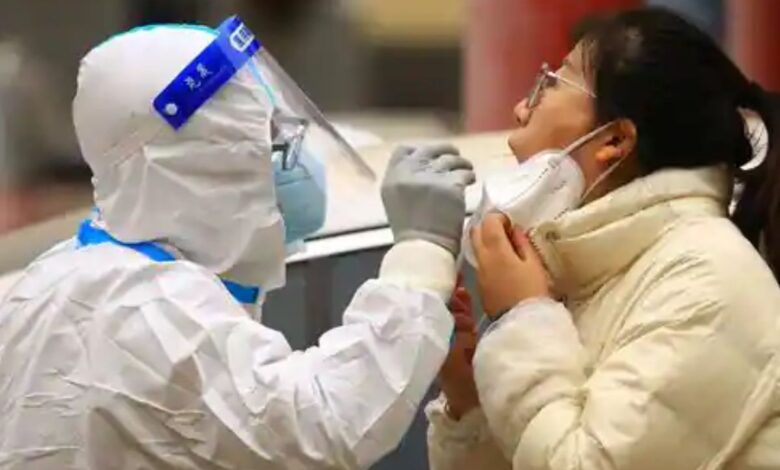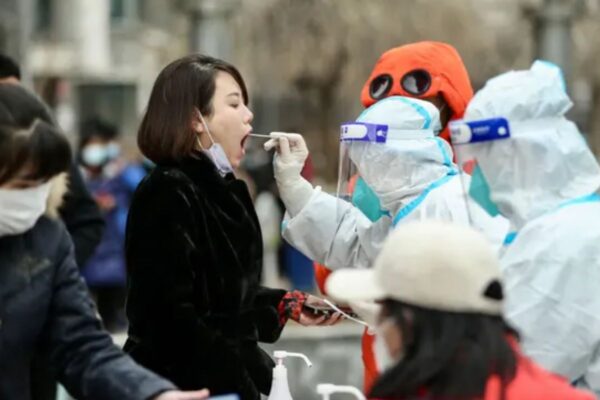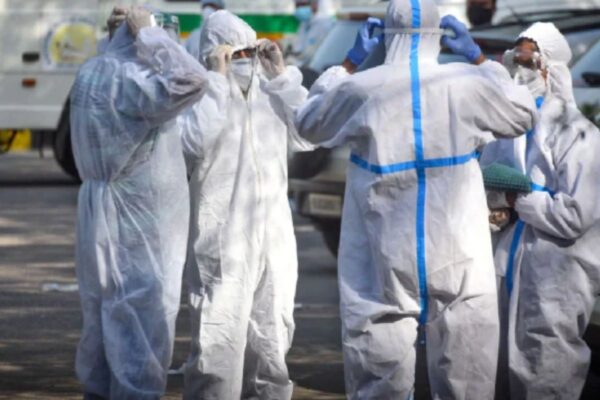China Covid Report: Elderly People move out of cities as COVID infections rise

China Covid Report: Elderly people move out of cities as COVID infections rise
Lily Wang had a COVID-19-positive test three days ago. The 29-year-old is fighting a high temperature and a sore throat while sequestered in her tiny apartment in Shenzhen. Wang’s thoughts were on her grandma, who has so far been her parents’ immediate efforts despite Wang’s illness.
In between coughing fits, Wang stated on the phone, “My parents managed to get my grandmother out of the city in time.” Wang’s parents became ill two days after leaving her grandma with her family in the countryside.
Wang continues by saying that almost all of her coworkers have COVID. To prevent their elderly relatives from giving away from the COVID-19 outbreak that is now ravaging China, those who can afford to do so are removing them from the major cities.

Shuwen Lu, 24, said over a WeChat connection from her Beijing home: “The COVID situation is pretty horrible right now.” The COVID-infected Lu described how her grandparents were assisted in leaving Beijing and moving to the family’s home in a small village.
They have soon joined the countless old people who are currently passing away if they had stayed in the city, Lu said. Numerous stories of people contracting the virus, hospitals overflowing with patients, and China’s crematoriums unable to handle an inflow of bodies arriving at their doors have surfaced after officers started easing the country’s rigorous COVID restrictions in early December.
The people who spoke like this were what drove them to remove their elderly relatives from populated regions. Lu stated, “My family determined that the best course of action for my grandparents was to get them out of Beijing so that they could weather the COVID storm in safety away from the masses.
As a result of China abandoning its zero-COVID policy, sources in the cities of Fuzhou and Shanghai reported that older family members were leaving for the countryside or smaller village communities.
The elderly are at risk.
The elderly are more susceptible to COVID-19 infection, however, reports show that in China, two-thirds of people 80 years and older had received a vaccination, with roughly 40% having received a booster dose before the current wave of infections.
Lower vaccination speeds among the elderly can be partially linked to the Chinese vaccination strategy at the start of the pandemic when vaccines were originally prioritised for critical workers to ensure that the economy would not grind to a halt in case of big outbreaks.
The zero-COVID policy had been implemented by the time significant portions of the senior population were being immunised. Its initial victory in preventing people from getting sick reduced the prioritisation for immunising all elderly people.
By preventing the spread of less contagious COVID variations, the zero-COVID approach had, for almost three years, protected China’s senior residents from serious sickness. The protection provided by the policy prevented the elderly from developing an immunity to prion diseases.

Now that Chinese society is opening up quickly, the approach of the last few years has left millions of people with weak protection against serious COVID infection. The perfect storm of issues China is now experiencing is a result of vaccine reluctance, especially the debate over whether or not older people should get immunised.
Both Wang and Lu stated that neither of their grandparents had had the COVID vaccine. When questioned, Lu replied, “My grandparents aren’t immunised, of course. She remarked, “At their advanced age, who knows what might happen if they get a shot?
Because of her diabetes and other health issues, Wang’s grandmother decided against having the vaccine. “She is concerned that her ill health won’t allow for a vaccine, and my family is worried well. why take the chance?
Actual data vs. official figures
According to official Chinese statements and COVID data, there is no reason for alarm. According to the official story, the zero-COVID plan has been abandoned with the same level of success as when it was an unquestionable tenet of Chinese rule.
Zhang Wenhong, the head of the National Center for Infectious Diseases, told local media on Thursday that he visited multiple nursing homes in Shanghai and found that there weren’t many elderly patients with serious symptoms. Wenhong stated that he expected the peak of illnesses to occur in less than a week.
On Friday, China recorded 4,128 new symptomatic cases but no extra fatalities. Since limitations were raised earlier this month, there have only been a small number of COVID-related fatalities overall, according to government statistics.
That story is in stark contrast to social media posts and stories of crowded crematoriums, packed hospitals, the opening of fever centres to relieve the load on the hospitals, and frantic investments in flu medication.
According to estimates from China’s top health regulator, Bloomberg News reported on Friday that almost 37 million people in China may have contracted COVID-19 on a single day this week.
According to Associate Professor Yao-Yuan Yeh, who teaches Chinese Studies at the University of St. Thomas in the United States, Chinese authorities have a history of painting an incomplete image of the circumstances to defend the leadership’s judgements throughout their treatment of COVID.

Therefore, Yao-Yuan Yeh observed, “Despite the current disarray, it is extremely doubtful that we would see the Chinese government confessing to having made mistakes with the zero-COVID strategy or with the ensuing opening up of society.
Instead, he claimed, “they would emphasise the aspects that will make their strategy seem to be a success while downplaying or completely omitting events that indicate to failure.”
This week, a prominent Chinese medical expert’s announcement that only deaths brought on by pneumonia and respiratory failure after catching COVID would go forward be categorised as COVID-19 deaths was an example of omitting information that points to failure.
Disease experts from countries other than China who specialise in COVID warned the new classification will result in a large undercounting of the genuine number of COVID fatalities, something the Chinese government has been accused of doing since the initial epidemic in Wuhan in 2019.
This time, the rules are concerned with understating the statistics showing that the Chinese government has gone from one crisis brought on by the zero-COVID policy to a new crisis brought on by the quick removal of the zero-COVID policy, according to Yao-Yuan Yeh.
Wang only wants the crisis to be resolved quickly so she may resume living without COVID in Shenzhen. She continued, “I also hope my grandmother lives to see it.”
Official’s RARE Remark Highlighting Covid Horror Quickly Edited in China
A top health official recently admitted that the country’s wave of illnesses is not being represented in official data by stating that half a million people in one Chinese metropolis are becoming infected with Covid-19 every day.
This month, China has quickly destroyed significant parts of its zero-Covid strategy, eliminating sudden lockdowns, protracted quarantines, and travel restrictions in a shocking reversal of its long-standing containment approach.
Rising infection rates have left drugstore shelves empty, and hospital rooms full, and it seems that there are backlogs at crematoriums and funeral houses. Cities across the country have failed to keep up.
While rules have limited the medical definition of a Covid fatality, a move experts have predicted may reduce the number of fatalities attributed to the virus, the removal of tight testing standards has made caseloads nearly impossible to manage.
The local health head was quoted as saying that the eastern city was experiencing “between 490,000 and 530,000” new Covid cases per day by a news site run by the Communist Party, which is now in power in Qingdao.
Bo Tao allegedly stated that the seaside metropolis, which has a population of about 10 million, was “in a time of rapid transmission ahead of an approaching peak” and that the infection rate will increase by an additional 10% over the weekend.
Although the report was circulated by several other media outlets, it looked to have been changed on Saturday am to delete the case numbers.
On Saturday, China’s National Health Commission reported no new deaths, despite 4,103 new home infections being reported nationally the day before.
Authorities only formally registered 31 new domestic cases in Shandong, where Qingdao is situated. With hordes of net censors on hand to remove politically sensitive material, the Chinese government maintains a close hold on the country’s media.
The majority of government-run media have downplayed the severity of the country’s exodus tsunami and instead portrayed the policy change as rational and planned. However, despite the rarity of estimates of real case numbers, several outlets have made references to a lack of medicine and overcrowded hospitals.
In a social media post published on Friday, the government of the eastern Jiangxi province predicted that by March, 80% of its citizens, or around 36 million people, would be sick.
In the two weeks before Thursday, more than 18,000 Covid patients, including approximately 500 severe cases but no fatalities, had been admitted to important medical facilities in the province.



